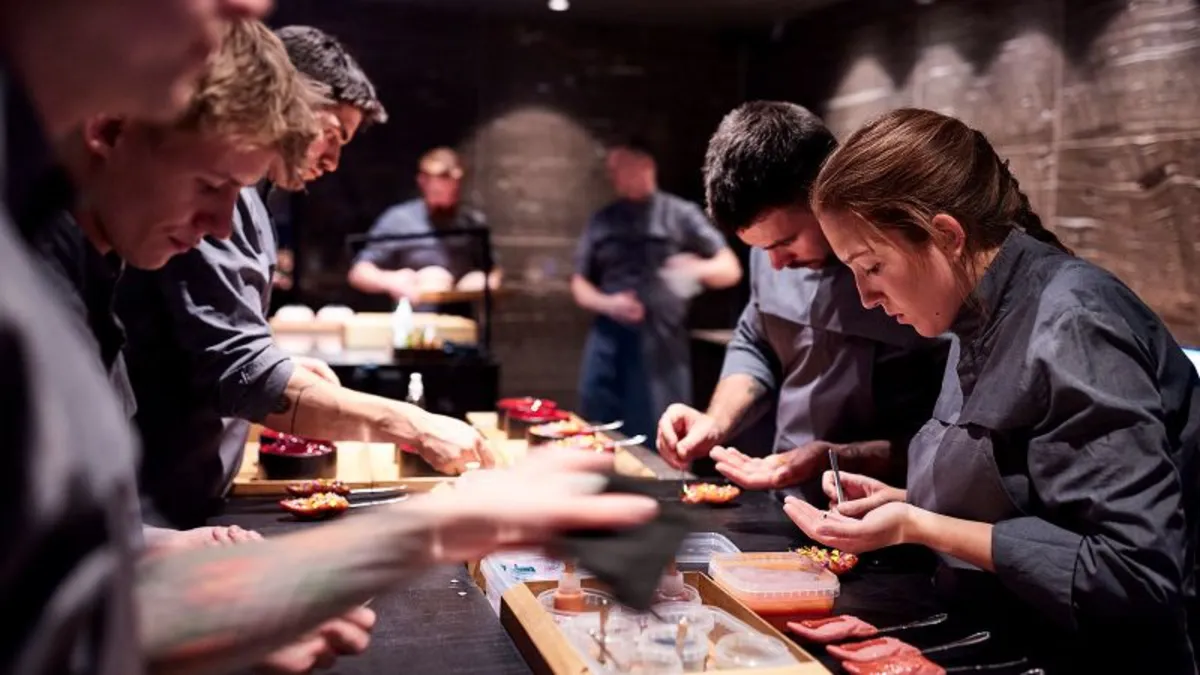
Ice cream, mascarpone, and milk-washed cocktails may sound like simple pleasures, but the unique offerings at Alchemist, a renowned two-Michelin-starred restaurant in Copenhagen, Denmark, take culinary creativity to a whole new level with the inclusion of an unconventional ingredient: ants. Ranked No. 5 on The World’s 50 Best Restaurants list, Alchemist describes itself as “part science lab,” where culinary experimentation thrives.
The restaurant's foray into using ants began when chefs observed that milk curdled unexpectedly after an ant was left inside a fridge. This interesting phenomenon sparked a series of experiments involving anthropologists, culinary innovators, and food scientists. Nabila Rodríguez Valerón, head of flavor fermentation at Danish food tech company Summ Ingredients, and a former food scientist at Alchemist, is one of the co-authors of a groundbreaking study published in the journal iScience.
The practice of fermenting milk into cheese and yogurt has ancient roots, dating back approximately 9,000 years to Anatolia, located in modern-day Turkey. The research highlights how microbes from natural plants, such as pine cones and nettles, initiate the fermentation process that converts milk into thick, tangy yogurt. However, a shift occurred in the early 1900s when microbiologists successfully created yogurt in laboratory settings, leading to a more simplified, industrialized version that typically contains only two species of lactic acid bacteria. This change has implications on the complexity and flavor of modern yogurt.
Intrigued by traditional methods, the researchers focused on a Bulgarian spring practice involving the use of red wood ants in yogurt fermentation. The team visited a village that held memories of this ancestral practice, where local residents assisted in their attempts to recreate the yogurt. The process involved milking a cow, warming the milk, adding four live ants, covering the jar with cheesecloth, and burying it within the ant colony. The resulting product displayed a slight tangy flavor and began thickening, signifying the onset of yogurt fermentation.
To explore the culinary applications of ant yogurt, the research team at Alchemist created three innovative dishes using live, frozen, and dehydrated ants. The first was an “ant-wich” ice cream crafted from sheep yogurt fermented with live ants, sandwiched between ant-shaped cookies and accompanied by an ant-infused gel. The researchers noted that the ants contributed a distinct acidity that contrasted beautifully with the richness of the milk.
The second dish featured a goat milk mascarpone, where dehydrated ants were used to initiate fermentation. Although the texture resembled traditional mascarpone, the flavor profile was described as pungent and aromatic, reminiscent of a mature pecorino cheese. The final creation was a milk-washed cocktail that utilized dehydrated ants to induce curdling, resulting in a drink that combined apricot liqueur and brandy. According to Sinotte, this cocktail was “absolutely incredible,” showcasing an acidity that was complex and lemony.
Further experiments conducted in a sterile laboratory setting revealed that live ants significantly outperformed frozen and dehydrated ants as fermentation starters. The study showed that live ants consistently introduced beneficial lactic and acetic acids to the milk, resulting in a yogurt rich in various lactic acid bacteria species. In contrast, yogurts made with frozen and dehydrated ants exhibited lower bacterial counts and included undesirable contaminants.
Food scientist Changqi Liu praised the study, emphasizing that it illustrates how insects can transcend their role as mere nutrient sources and contribute meaningfully to food transformation and diversification. He remarked, “This research reminds us that traditional practices can yield new scientific insights when examined closely.”
Despite the innovative nature of ant dishes served at Alchemist, the researchers caution against replicating the ant yogurt process at home. The European red wood ants used in the study can harbor a parasite, posing potential health risks. Any attempt to mix live ants with milk must involve strict safety measures to prevent contamination. Food chemist Andrea Liceaga noted that while freezing can eliminate some pathogens, the process of thawing and fermenting may inadvertently encourage foodborne illness.
The researchers stress that their findings do not merely aim to scale up ant yogurt production, as the European red wood ants are classified as near-threatened. Instead, they suggest investigating the exciting bacteria present in ants for future fermentation processes. Valerón commented on the health benefits of utilizing diverse microorganisms in food production, advocating for a shift towards a more complex and diverse approach to fermentation.
In conclusion, the innovative use of ants at Alchemist represents a fascinating intersection of culinary art and scientific exploration, pushing the boundaries of flavor while also highlighting the importance of traditional methods in modern gastronomy.